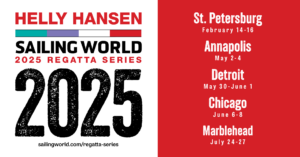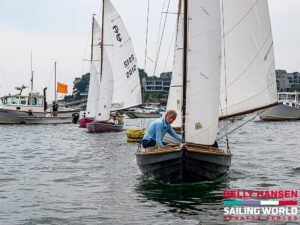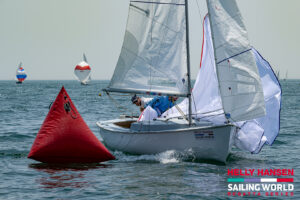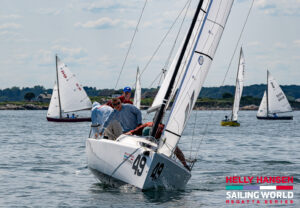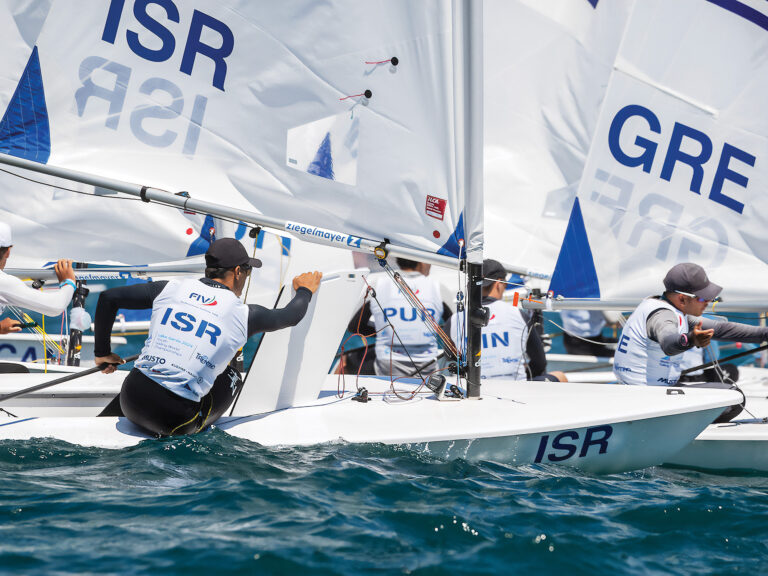
SailflowLarchmont2006
September is a transitional month for the weather in Long Island Sound, with normally light summer breezes giving way to stronger fall winds. The month starts with a lingering summertime feel under slow moving weather systems, but as the month progresses we tend to see more dynamic weather. A common setup for early fall is a surface high pressure center over New England that gives relatively cool conditions and a weak easterly tendency to the winds. In the morning the east-west orientation of the Sound tends to channel, even accelerate, this easterly flow. By afternoon the thermal gradient frequently becomes the dominant influence, with any daytime heating killing the east-northeasterly flow before a southerly sea breeze can fill in. Last year’s NOOD races saw this exact pattern and ultimately resulted in light wind races on the first day after the easterlies died off. The second day had a stronger east-northeasterly flow in place and tended to last a bit longer, but still the sea breeze was able to come around in the afternoon. (See graphs.)By September the air temperatures reach an average high of 76 degrees, which is only a degree or two warmer than the water in Western Long Island Sound. This means thermal gradient effects are very dependent on the daily temperatures and are often weak. With enough daytime heating, the breeze will veer to a southerly flow in the afternoon. This sea breeze can sometimes get into a pulsing pattern with the wind building to 12 to 15 knots close in to shore. The south side of the Sound rarely sees any significant thermal effects at this time of year. The wind roses show a prevailing southwest flow for last year, which correlates well with sea breezing. When we do get cold fronts approaching, the southwest sea breeze can couple with the southwest gradient wind to give a fairly strong sea breeze flow. September is on average the wettest month of the year, so while the above descriptions are the dominate pattern early in the month, other setups, such as warm and cold frontal passages, may occur during this year’s race period. Each offers it’s own peculiar wind patterns.
Author’s Note:Sailflow has installed a new sensor on the end of the jetty off of Larchmont that will be ideal for real-time data for the races. Be sure to check it out!Knowing what forces are driving the winds is of great importance to gaining the edge on your competition. Sailflow.com provides real-time sensors as well as complementary forecasts throughout the race period at . Also, in cooperation with North Sails, Sailing Weather Service is offering free precision race forecasts for this event. Sign up at http://na.northsails.com/ew/ew_main.taf

